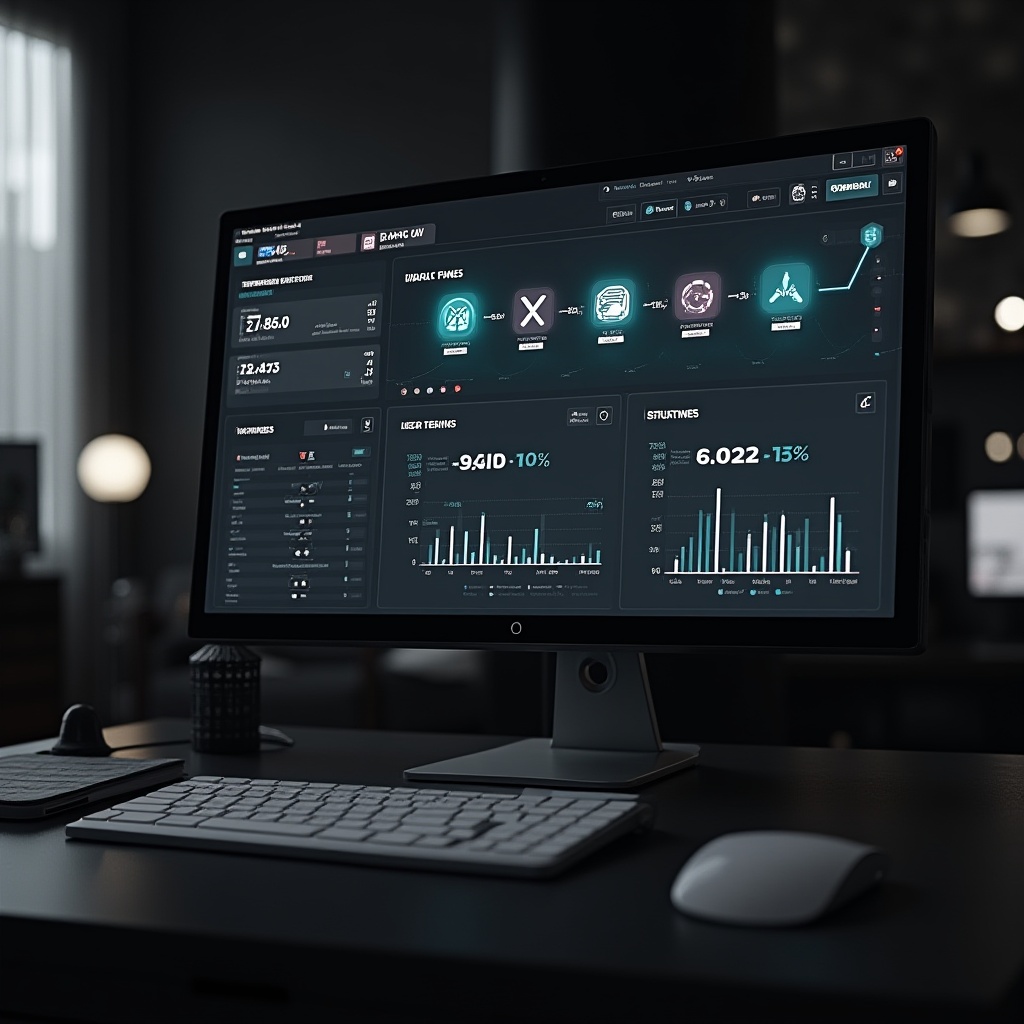The world of cryptocurrency never sits still, especially when it comes to stablecoins—the backbone of decentralized finance (DeFi). These digital assets pegged to fiat currencies provide a foundation for trading, lending, and yield farming in an otherwise volatile market. Now, Curve Finance, one of DeFi’s most prominent protocols, has launched its own stablecoin: crvUSD.
But what makes crvUSD different? And more importantly, can Curve leverage this launch to rise as a dominant player in the highly competitive stablecoin sector? The stablecoin landscape is crowded with well-established players like USDC, USDT, and DAI. Each has carved its niche with unique features, adoption levels, and trust factors.
In this article, we’ll dissect everything a DeFi trader or investor needs to know about crvUSD—from its launch details and underlying technology to its potential impact on Curve Finance, liquidity pools, and your trading strategies. By the end, you’ll have a clear understanding of whether crvUSD is a game-changer or just another entrant in the stablecoin wars.
Understanding crvUSD: A New Entrant in Stablecoins
Launch Details
Curve Finance officially launched crvUSD in early 2023, marking its first venture into issuing a native stablecoin. Unlike traditional stablecoins that are often backed by fiat reserves held in centralized banks, crvUSD embraces a decentralized and overcollateralized model. It is designed to offer transparency, security, and integration with Curve’s vast ecosystem.
The launch was accompanied by significant community interest and an ambitious roadmap aiming to carve out a unique position for crvUSD in the DeFi landscape. This launch wasn’t Curve dipping its toes in stablecoins—it was a strategic move aimed at expanding its footprint beyond liquidity provision to becoming a key player in stablecoin issuance and lending.
Mechanism: LLAMMA Algorithm
At the heart of crvUSD’s stability lies an innovative algorithm called LLAMMA, which stands for Lending-Liquidating Automated Market Maker Algorithm. LLAMMA handles liquidation mechanics in a decentralized, efficient manner. Rather than relying on external liquidators or costly on-chain auctions, LLAMMA uses an automated market-making mechanism designed to minimize slippage and maintain price stability even during turbulent market conditions.
This mechanism allows borrowers to mint crvUSD by locking up collateral—such as ETH, WBTC, and other approved assets—in an overcollateralized fashion. If the collateral value drops below a required threshold, LLAMMA triggers a liquidation process that protects the system from undercollateralization without the severe market impact traditional liquidations can cause.
This algorithmic innovation sets crvUSD apart from many existing stablecoins and aims to reduce risks commonly associated with crypto lending platforms.
Collateralization and Security
crvUSD is backed by a basket of high-quality crypto assets, predominantly large-cap tokens like ETH and WBTC. The overcollateralization requirement means users must deposit more value in collateral than the amount of crvUSD minted, providing a safety buffer against price volatility.
In addition to the LLAMMA protocol, Curve integrates its well-known governance mechanisms and robust smart contracts audited by top security firms, aiming to protect users and maintain system integrity.
crvUSD vs. Existing Stablecoins
Comparison with DAI
DAI is often considered the gold standard for decentralized, overcollateralized stablecoins. Both DAI and crvUSD share core principles: decentralization, transparency, and collateral backing by cryptocurrencies.
However, crvUSD introduces several key differences:
– Liquidation Mechanism: While MakerDAO (the issuer of DAI) uses auctions for liquidations, crvUSD leverages LLAMMA, an AMM-based liquidation system that aims to reduce slippage and preserve collateral value during liquidations.
– Collateral Types: DAI supports a wide range of collateral types, but crvUSD currently focuses on a more selective set of high-quality collateral, potentially reducing complexity but limiting diversification.
– Integration with Curve: crvUSD is tightly integrated into Curve’s ecosystem, allowing seamless interaction with liquidity pools and savings products.
Contrast with USDC and USDT
USDC and USDT are centralized stablecoins backed by fiat reserves. They dominate trading volumes and liquidity but come with centralized custodianship, exposing users to regulatory and counterparty risks.
crvUSD, on the other hand, offers decentralization and overcollateralization, removing the need to trust a central party or bank. For DeFi users valuing censorship resistance and transparency, crvUSD presents an attractive alternative.
That said, USDC and USDT currently enjoy broader adoption and market trust, which crvUSD is still building.
Market Position and Adoption
At launch, crvUSD’s market capitalization is modest compared to multi-billion dollar giants like USDC and USDT, or DAI, which has years of community trust and integration.
Nonetheless, crvUSD benefits from Curve’s established user base and liquidity, giving it a solid foundation to grow. Its success will largely depend on user adoption, integration by other protocols, and maintaining stable peg mechanics.
Implications for DeFi Traders and Investors
Yield Opportunities with Savings crvUSD (scrvUSD)
One of the innovative features accompanying crvUSD is the introduction of “Savings crvUSD” or scrvUSD. scrvUSD functions as a yield-bearing version of crvUSD, allowing holders to deposit their stablecoins and earn interest generated from lending fees and protocol incentives.
This offers DeFi traders an additional passive income stream. Yield rates on scrvUSD are competitive with other savings protocols but come with the advantage of being deeply integrated within Curve’s ecosystem, which is known for its liquidity efficiency.
For yield farmers, this creates opportunities to optimize returns by pairing crvUSD liquidity with scrvUSD holdings, adding layers to strategy diversification.
Shifts in Liquidity Pools
Curve’s stablecoin pools are the backbone of many DeFi yield farms and trading strategies. The addition of crvUSD creates new liquidity pools or updates existing ones to include crvUSD pairs.
Traders may see shifts in liquidity preferences as users allocate capital toward pools offering better returns or reduced risk due to crvUSD’s overcollateralization and algorithmic liquidation.
These liquidity shifts can influence trading volumes, slippage, and APRs across Curve and other interconnected DeFi platforms.
Risk Management: Reduced Liquidation Risks
Liquidation events in DeFi are often associated with sharp losses due to slippage and market impact. By using the LLAMMA AMM-based liquidation, crvUSD aims to smooth out liquidations, reducing drastic price movements and making leveraged positions less risky.
For traders using crvUSD as collateral or borrowing it for leveraged trades, this enhanced risk management can translate into more predictable outcomes and potentially safer leverage.
However, this mechanism is still relatively new and should be approached with caution until thoroughly battle-tested.
Impact on Curve Finance and CRV Token
Fee Distribution Changes
Curve Finance has adjusted its fee distribution to prioritize crvUSD. Fees generated from crvUSD lending and transactions are funneled back into the protocol, providing additional incentives for liquidity providers and CRV token holders.
This move aligns the interests of users with the protocol’s growth and sustainability, encouraging active participation in crvUSD markets.
CRV Emissions Reduction
In 2024, Curve implemented a significant reduction in annual CRV token emissions—from previous higher inflation levels down to 137 million CRV per year. This decision was aimed at promoting a more sustainable economic model.
The launch of crvUSD is tied closely to this emission strategy, with crvUSD markets expected to support token value through fee capture and increased utility, helping balance reduced inflation.
Governance Influence and veCRV
Curve’s governance token, veCRV, gains enhanced utility through crvUSD integration. veCRV holders can influence decisions related to crvUSD parameters, fee models, and protocol upgrades.
Moreover, incentives linked to crvUSD markets boost the value proposition of holding veCRV, potentially driving demand for governance participation and aligning long-term interests.
Challenges and Considerations
Adoption Hurdles
Breaking into a stablecoin market dominated by giants is no small feat. crvUSD faces challenges such as building user trust, achieving broad acceptance across exchanges and DeFi platforms, and demonstrating long-term stability.
Network effects heavily favor established stablecoins. For crvUSD, gaining traction requires aggressive partnerships, liquidity incentives, and proven reliability over time.
Regulatory Environment
Stablecoins have attracted increased regulatory scrutiny worldwide, with concerns around transparency, reserve backing, and systemic risks.
While crvUSD’s decentralized and algorithmic design may help mitigate some regulatory risks, future policies could impact adoption, especially in regions demanding strict compliance.
DeFi traders must stay informed about regulatory developments as these can affect stablecoin usage, access, and legal standing.
Technical and Smart Contract Risks
Though Curve Finance has a strong reputation for security, crvUSD introduces new smart contract complexity, especially with LLAMMA.
Bugs, exploits, or unforeseen edge cases in liquidation mechanics could pose risks to users.
Regular audits and community scrutiny are ongoing, but users should remain cautious and diversify risk exposure.
Future Outlook
Ecosystem Integration
To succeed, crvUSD must become a staple within DeFi beyond Curve itself. Integration with lending protocols, aggregators, decentralized exchanges, and wallets is critical.
Efforts are underway to collaborate with leading DeFi projects, expanding crvUSD’s utility and acceptance.
This composability will drive usage, volume, and network effects, boosting crvUSD’s competitive edge.
Market Expansion Strategies
Curve is exploring strategies such as incentivizing liquidity providers with boosted yields, partnering with institutional investors, and expanding collateral types to attract diverse users.
Education and marketing campaigns aim to increase awareness and demonstrate crvUSD’s advantages over competing stablecoins.
Successful market expansion hinges on balancing growth incentives with sustainable economics.
Innovation and Continuous Development
Curve’s team remains committed to evolving crvUSD’s features. Potential upgrades include adding multi-chain support, enhancing collateral options, and refining liquidation algorithms.
Innovation is vital to stay ahead in a fast-moving market where new stablecoin designs and lending models frequently emerge.
Staying adaptive and responsive to community feedback will strengthen crvUSD’s position over time.
Final Thought
crvUSD represents an ambitious and well-crafted addition to the stablecoin landscape. By combining decentralization, overcollateralization, and a novel liquidation mechanism, it addresses many pain points faced by DeFi traders and investors.
Its launch provides new yield opportunities, more efficient liquidity pools, and potentially safer leverage options within Curve’s ecosystem. Meanwhile, Curve Finance benefits through aligned incentives, improved tokenomics, and enhanced governance utility.
Yet, crvUSD must navigate considerable challenges—gaining adoption in a saturated market, regulatory uncertainties, and technical risks inherent in new protocols.
For DeFi traders and investors, crvUSD is worth close attention as a potentially disruptive force. While cautious optimism is warranted, its integration with one of DeFi’s most trusted platforms gives it a promising foundation.
Ultimately, whether Curve can “win” the stablecoin wars depends on continued innovation, community support, and its ability to prove real-world utility and resilience.





